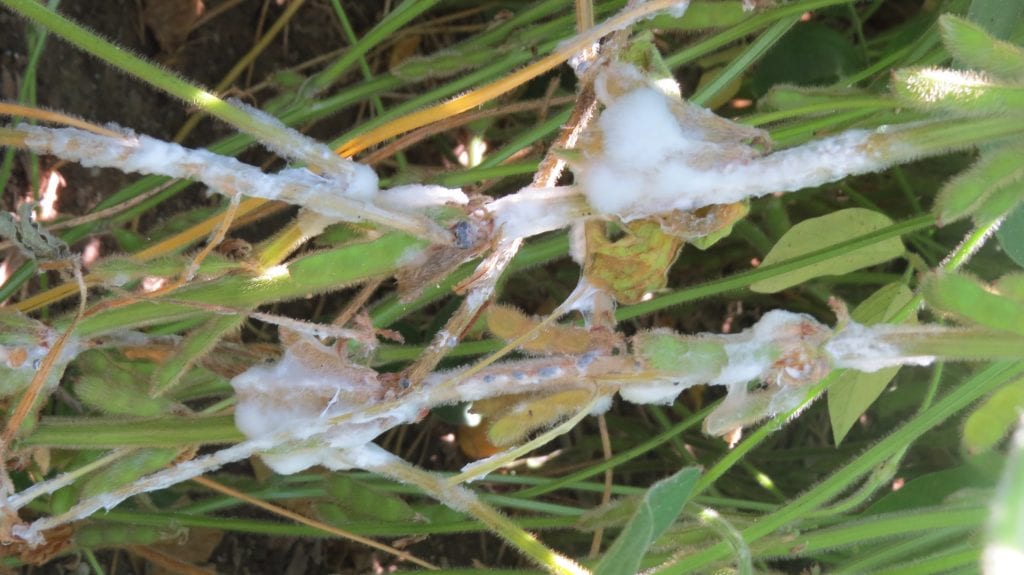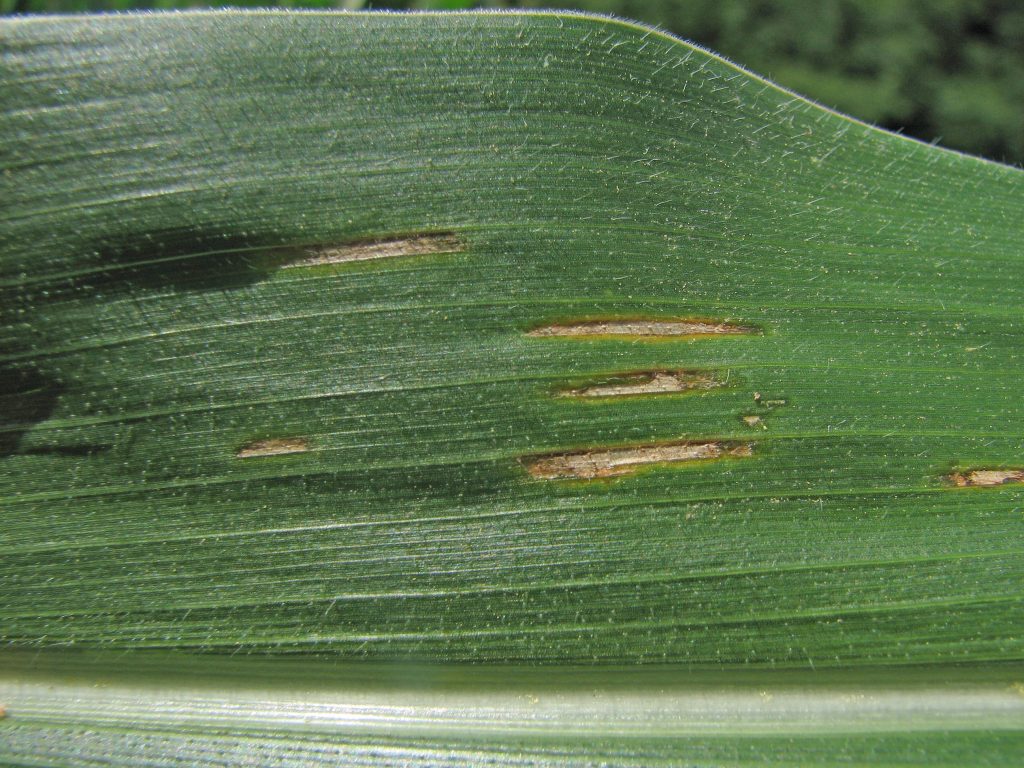NYS IPM Weekly Field Crops Pest Report
Western Bean Cutworm in Corn
Western bean cutworm flights were at peak this last week in much of the state. Western bean cutworm almost exclusively lay their eggs on pretassel corn. Late planted corn is most vulnerable that may have not tasseled yet. If you planted the Viptera hybrid it is resistant to western bean cutworm. If not it is best to get out and scout your corn that will be used for grain. The research on damage by western bean cutworm to silage shows no economic benefits to control the pest. See the table below for specific captures of western bean cutworm moths by location across the state.
For more information, please view the following information: Western Bean Cutworm, Video on scouting western bean cutworm
White Mold in Soybeans
White mold was discovered in western NY this last week. The wet conditions as of late have created the perfect environment for this disease to proliferate. I would expect reports of white mold in soybeans will increase in the weeks to come.
For more information, view the following scouting video and publication: White Mold or Sclerotinia Stem Rot
Gray Leaf Spot on Corn
There were more reports of gray leaf spot on corn across the state. There have been no reports of high levels of the disease in corn yet. Gray leaf spot has what looks like little match stick lesions on the leaves. If your corn hybrid is susceptible to the disease and the lesions are at or above the ear across the field you might consider a fungicide. If your corn hybrid is moderate or highly resistant to the disease, you most likely will not need a fungicide.
For more information, view the website: Gray Leaf Spot
Western Bean Cutworm Moth Catches by Location in NYS
Clipboard Checklist
Keith Waldron, NYS IPM
General
*Walk fields to check general field condition, weed, vertebrate and other issues
*Watch for crop maturity, stand assessments, weed escapes, nutrient deficiencies, lodging issues
Alfalfa:
*Evaluate established legume stands for approximate days until harvest
*Monitor potato leafhopper, foliar, systemic and crown rot diseases.
*Monitor new seedings for potato leafhopper, pythium blight, phytopthora root rot.
Small Grains:
*Monitor grain fields for growth stage, disease and lodging issues, grain maturity, harvest timing
*Record diseases present, location and types of weed escapes
Corn:
*Monitor for mid-season corn pests including European corn borer, corn rootworm, western bean cutworm, slugs, foliar diseases such as northern corn leaf blight and gray leaf spot, weed issues, nutrient deficiencies, vertebrate damage.
Soybeans:
*Monitor for soybean aphid, defoliators, foliar diseases, white mold, weed issues, vertebrate damage
Pastures:
*Check water sources, mend fences as needed.
*Check crop growth, clip pastures between grazing as needed
*Monitor for invasive species, plants harmful to livestock
*Review/Plan rotations
Storage:
* Check stored grain bins for temperature, moisture and signs of mold and insects. Aerate, core, transfer grain or treat as necessary
* Clean and disinfect empty storage bins in preparation for grain harvest
*Check forage allocation and anticipate feed program adjustments as forages from previous year are used up
*Mow around storage bins and facility to minimize pest hiding places
Dairy Cattle Barn Fly Management:
*Monitor animals and barn area for house fly, stable fly and other pest management needs including presence of rodents and birds.
*Check facilities for favorable fly breeding conditions: (organic matter + moisture): leaks in watering systems, roof gutters for leaks and potential overspill, drainage,
*Sanitation, sanitation, sanitation – clean animal resting areas, feed troughs, minimize source of moist organic matter i.e. fly breeding areas in barn and in adjacent animal loafing yard
* Continue fly monitoring: install “3X5″ index card fly speck monitoring cards throughout barn
*Use, replenish, replace fly management materials: sticky fly tapes/ribbons, insecticide baits, natural enemies (parasitoids), fly population monitoring (3 x 5) spot cards
*Consider purchase and release of Muscidifurax raptor and/or M. raptorellus natural enemies of house and stable fly pupae.
Dairy Cattle on Pasture:
*Monitor animals for presence of face flies, horn flies and stable flies. Action guidelines: face flies (average 10 per animal face), horn flies (average 50 / dairy per animal side, 200 / beef cattle per animal side), stable flies average 10 per animal (all four legs)
*Check feed bunk / water source locations for signs of stable fly breeding (moist undisturbed organic matter – spilled feed, round bales, etc.), minimize source of moist organic matter i.e. fly breeding areas in barn and in adjacent animal exercise yard.
*Check pasture for forage quality / quantity, rotate as appropriate
*Check pasture for vegetation poisonous to livestock
*Consider use of pasture fly traps to help reduce deer, horse and stable fly populations





